May 31, 2017
Portugal and Spain
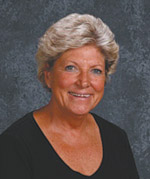 By Mary Schricker Gemberling
By Mary Schricker Gemberling
Picasso, Cork, a Royal Palace, Burro Taxis, Flamenco dancing, Tapas, a famous Rock and a lot of Bull sum up the highlights of our recent trip to Portugal and Spain.
Pablo Picasso is probably the most important figure of the 20th century. Before the age of 50, the Spanish born artist had become the most well-known name in modern art with the most distinct style and eye for artistic creation. Throughout his career he created more than 20,000 paintings, drawings, sculptures, ceramics and other items. We visited the Museo Picasso Malaga, a museum in Malaga Spain, where the artist was born. It opened in a restored 16th century palace in 2003 and has 285 works donated by members of Picasso’s family.
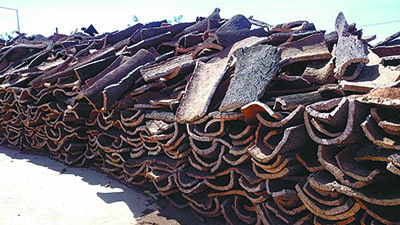 I thought a cork was, well a ‘cork’! That is until a drive through the cork fields in Portimao Portugal and a tour through a cork factory. I had no idea that the cork industry generates 60,000 jobs and $1 billion in annual exports. We saw the cork in its raw form and learned how it was processed into the many cork products. We saw the challenges faced with the introduction of synthetic wine corks. From now on I will certainly try to buy wine with real cork stoppers!!
I thought a cork was, well a ‘cork’! That is until a drive through the cork fields in Portimao Portugal and a tour through a cork factory. I had no idea that the cork industry generates 60,000 jobs and $1 billion in annual exports. We saw the cork in its raw form and learned how it was processed into the many cork products. We saw the challenges faced with the introduction of synthetic wine corks. From now on I will certainly try to buy wine with real cork stoppers!!
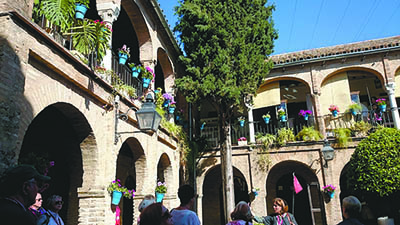 The Alcazar is the Royal Palace of Seville, a magnificent complex of patios and halls in different architectural styles. It was originally a Morish fort built in the 10th century. Over many centuries Monarchs expanded the palace, resulting in a diverse complex with different architectural styles. The top floor of the palace is still actively used by the Royal Family. The Alcazar of Seville was used as a location for scenes in Seasons Five and Six of the hugely successful HBO TV series, Game of Thrones.
The Alcazar is the Royal Palace of Seville, a magnificent complex of patios and halls in different architectural styles. It was originally a Morish fort built in the 10th century. Over many centuries Monarchs expanded the palace, resulting in a diverse complex with different architectural styles. The top floor of the palace is still actively used by the Royal Family. The Alcazar of Seville was used as a location for scenes in Seasons Five and Six of the hugely successful HBO TV series, Game of Thrones.
We visited the village of Mijas; a typical Andalusian white-washed village located 1476 feet above sea level on a mountainside in the heart of the Costa del Sol region of Spain. Due to its proximity to the sea, this charming village enjoys mild temperatures with some 2,920 hours of sunshine per year. The most famous residents of this village are the donkeys, or ‘Burros Taxis’ started in the 1960’s by Julien Nunez. He was a local man who used donkeys to transport goods through the mountainous area. When tourists started coming to the undiscovered village they took lots of pictures of the donkeys carrying the workers and baskets of vegetables on their backs. When the visitors began asking for rides Nunez seized the opportunity and so began the Burros Taxis.
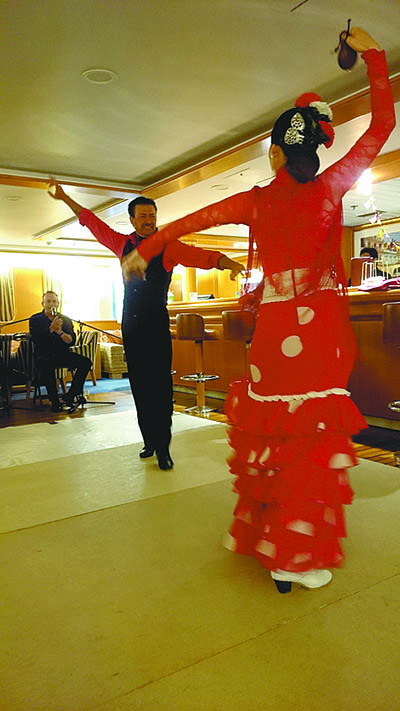 Flamenco, one of the most characteristic elements of Spanish culture, is a form of dance, song, and instrumental (mostly guitar) music commonly associated with the Andalusian (Gypsies) of southern Spain. Flamenco dance is known for its sweeping arm movements and rhythmic feet stomping. We were treated to a private performance by a troupe of dancers and musicians steeped in the tradition of Flamenco. The youngest performer, an amazing ten year old girl, was accompanied by her grandfather who played the guitar. The greatest joy of flamenco dancing was watching the personal expressions and emotions of the dancers. What an outstanding show!
Flamenco, one of the most characteristic elements of Spanish culture, is a form of dance, song, and instrumental (mostly guitar) music commonly associated with the Andalusian (Gypsies) of southern Spain. Flamenco dance is known for its sweeping arm movements and rhythmic feet stomping. We were treated to a private performance by a troupe of dancers and musicians steeped in the tradition of Flamenco. The youngest performer, an amazing ten year old girl, was accompanied by her grandfather who played the guitar. The greatest joy of flamenco dancing was watching the personal expressions and emotions of the dancers. What an outstanding show!
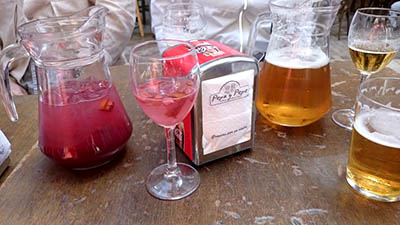 Tapas were accidently invented in Spain. King Fernando VII of Spain was enjoying a meal in one of the country’s oldest restaurants, when he ordered a glass of wine. The server placed a slice of cheese, ham, or bread on top of the glass to protect the wine from bugs and dust. This protective measure was known as a tapadero. When the glass of wine reached the king, he consumed the food alongside his drink, and every time he visited the restaurant he asked for a tapa to accompany his wine. Tapas or small bites as they are known are now popular worldwide. With some free time on our hands, eight of us decided to indulge in some Tapas for lunch at a local restaurant in Malaga. Along with our Sangria and local beer we ordered eight different tapa dishes to share. Not only was the food delicious, but the bill came to the equivalent of $12.50 a couple and we all had plenty to eat!
Tapas were accidently invented in Spain. King Fernando VII of Spain was enjoying a meal in one of the country’s oldest restaurants, when he ordered a glass of wine. The server placed a slice of cheese, ham, or bread on top of the glass to protect the wine from bugs and dust. This protective measure was known as a tapadero. When the glass of wine reached the king, he consumed the food alongside his drink, and every time he visited the restaurant he asked for a tapa to accompany his wine. Tapas or small bites as they are known are now popular worldwide. With some free time on our hands, eight of us decided to indulge in some Tapas for lunch at a local restaurant in Malaga. Along with our Sangria and local beer we ordered eight different tapa dishes to share. Not only was the food delicious, but the bill came to the equivalent of $12.50 a couple and we all had plenty to eat!
Since 1989, the Prudential Insurance Company has used the Rock of Gibraltar as its logo along with the slogan, “Get a Piece of the Rock. The Rock is Crown property of the United Kingdom (Gibraltar is part of the British overseas territory). A unique feature of the Rock is its system of underground passages, originally dug during the Great Siege of Gibraltar. They were later used in World War II as a keystone in the defense of shipping routes to the Mediterranean. The tunnels were also used as a secret observation post in the event of a German invasion. A six man team waited under cover for two and half years with radio equipment reporting any enemy movements. The Germans never captured Gibraltar so the team was disbanded to civilian life when the war ended. A guided tour through the tunnels and caves gave us just a glimpse of what these men endured while underground.
Bullfighting is quite a controversial topic in Spain and has been outlawed in some parts of the country. The opposing forces think it is animal cruelty to send a Bull into the ring to be slaughtered, but proponents feel that the practice is as Spanish as you can get. Bullfighting has been described by some to be an incredibly ancestral art form like poetry. Although we did not go to an actual bullfight we did get to visit a ranch where they raised the fighting bulls. A famous bullfighter and the owner of the ranch, Rafael Tejada Rafael, with red cape in hand, showed us how he staves off the Bulls when in the ring. The bulls, primarily bred free-range, are selected for certain combination of aggression, energy, strength, and stamina. Mature bulls weigh from 1100-1600 lbs. The raising of bulls is a complicated process but from what I saw on the ranch they really don’t have such a bad life, albeit short for some!
There are so many other things about our trip I could share, like beautiful beaches framed by majestic mountains, magnificent fresh food and flower markets, ancient palaces and churches, picturesque whitewashed villages, cobblestone streets, and scrumptious food!! The Iberian Peninsula is a great place to visit with warm and friendly people who welcome guests with open arms!
Mary, a former educator and Seniors Real Estate Specialist, is the author of three books; The West End Kid, A Labor of Love; My Personal Journey through the World of Caregiving, and Hotel Blackhawk; A Century of Elegance.
Filed Under: History, Personal Growth
Trackback URL: https://www.50pluslife.com/2017/05/31/portugal-and-spain/trackback/


